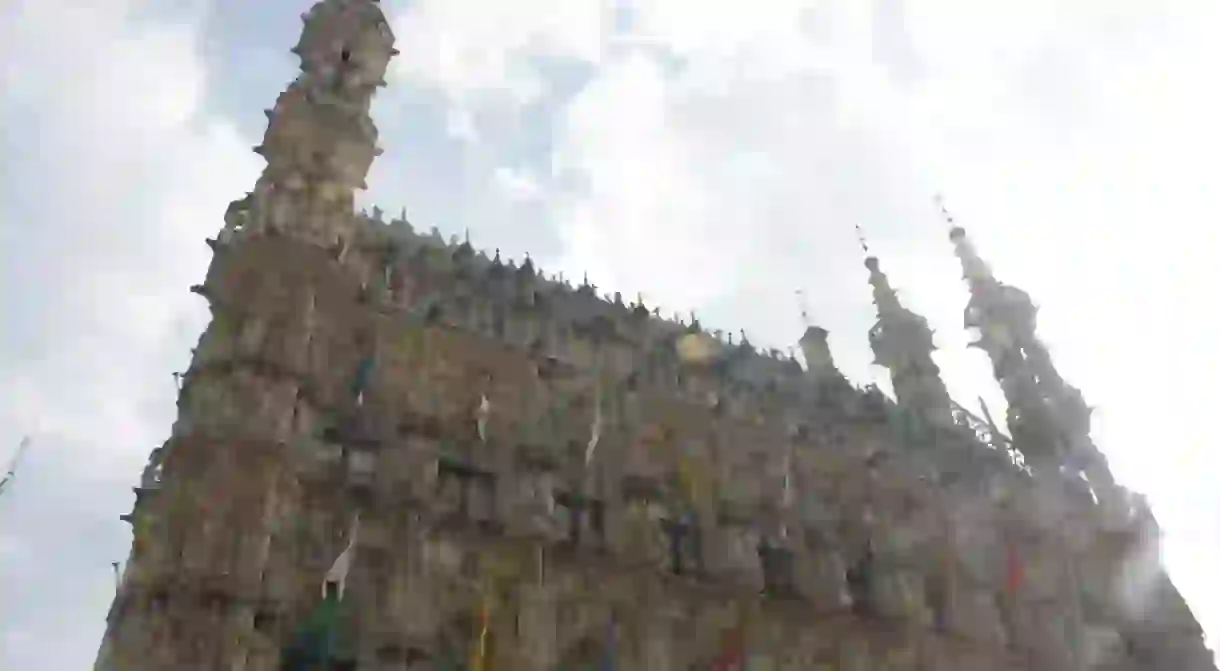A History Of Leuven Town Hall In 1 Minute

Along with her big sister, who dominates Brussels’ Grand Place, Leuven’s Town Hall is a shining example of the wow factor that Brabantine Gothic architecture is aimed to inspire. Even with a ‘hall of fame’ façade boasting 236 statuettes as its most striking feature, the building maintains a certain elegance thanks to its slender frame.
The historic Town Hall in the middle of the student city’s main square hasn’t always been quite as eye-catching as it is today. Less than two centuries ago it actually looked a little barren, standing across from the hulking St. Peter’s Church with no biblical or saintly statues to speak of. Its lack of bravado in the sculpture department even prompted Victor Hugo to comment: ‘a civil or church building with empty alcoves is like a book with empty pages.’

The initiative to embellish the exterior with local heroes, scientists and saints only came in 1847 – over 400 years after the Town Hall was constructed. With Belgium fresh off its revolution, the government of the newborn nation felt an intense need to re-establish the tiny country’s rich cultural heritage and nothing says ‘history of excellence’ like planting a pantheon on your cities’ ultimate political symbols. While the Leuvenaars themselves weren’t initially too keen on the idea of flashy and expensive additions to their City Hall, the go-ahead was given by King Leopold I and a competition was set up to select the sculptors who’d get the honor of transforming the building’s edifice into the iconic display of statues wall we see today.
Since the artists’ creations carry no inscriptions or name tags, however, there’s no easy way of telling who’s who in the army of statuettes. Yet on the ground floor you can be sure to find prominent Leuvenaars, often scholars and scientists – the city remains home to Belgium’s very first university, after all. The first floor is reserved for the patron saints of Leuven’s parishes and symbolic figures, while the aristocracy, including the Dukes of Brabant and Counts of Leuven, looks down on the populace from up top.
Taken by the façade’s immediate splendor and the incredibly detailed features of its stone men and women, many passers-by forget that the part of Town Hall boasting all these ornaments is merely one wing of a much larger complex. The fact is that the mayor’s seat occupies the entire block that stretches between the city’s main square and the gourmet alley Muntstraat. The flamboyant edifice also hides a courtyard known as ‘het Vrijthof’ and another building that’s older still.













